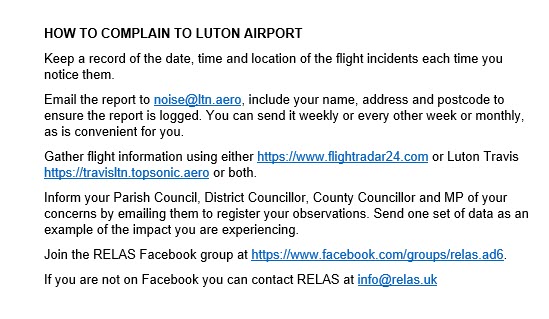Luton Airports new arrivals path is continuing to cause negative impacts on many villages in South Cambridgeshire and Huntingdonshire. The AD6 proposal came into effect in February this year following approval from the Civil Aviation Authority. The impacts being experienced has caught the attention of the local BBC Radio Cambridgeshire team devoting time to it this week.
I notice the change in flightpaths as we get some of them coming across us in Caldecote. As many of us take flights and we accept that aeroplanes have to fly, the concern is that the impact is much stronger than we were led to believe. The hope is that by airing the concerns, Luton airport can find ways to mitigate the sudden negative impact on the amenity of rural communities.
The BBC team asked me to speak on this issue as the District Councillor for Caldecote Ward as all the villages in my ward are affected. I have received reports from residents in all of them, Caldecote, Bourn, Kingston, Longstowe and especially Little Gransden. I have also been working with the RELAS (REject Luton Airport Stack) group team to raise awareness, educate communities on how to make reports to Luton.
As I know from experience, radio interviews tend to be for very short time, so I decided to write down main points about the matter. You can find those points in this document here. I didn’t expect to be able to raise them all, but it helps to have them for the focus it gives.
The start was early for me on the Dotty McLeod show, and you can listen to my interview on BBC iplayer here from 1 hr 10 minutes in to the program (7.10am). But I recommend starting to listen from 1 hour in at 7am and through the interviews of 2 residents in Gamlingay, myself and Keith Wilson, an aviation author from Ramsey. I think Keith saying the planes operating at night are on “low power settings” ignores the impact level. Also comparing jet engines that were operating 10 to 20 years ago to those operating now is rather disingenuous. Apparently the jet engine noise now is a third of previous levels. That argument ignores the fact that the ambient noise for rural areas is so much lower that any change in noise levels is very noticeable and has greater impact.
One of the other participants was Stephen Ferguson, an Independent Councillor from Huntingdonshire District Council. He spoke after the interview with a resident who lives in Grafham. You can listen to Stephen from about 2 hours 8 minutes in. Hopefully we made the case for all the residents in both District areas.
There was no one from Luton, NATS or CAA available to take part in the discussion. But they sent a statement that repeats the points that I have already outlined in this previous post. The post implementation period (PIR) is on now and will end on 31 May 2023. Then the CAA will analyse data to find out if the objective of the AD6 proposal is met. If not, then the change sponsors LLA and NATS will need to consider changes that can be made to modify it or make another change request!
It was interesting to pick up a tweet just after I’d spoken repeating one of the points I had made.

I recommend those who are affected or can help with data collection and analysis to get in touch with the RELAS team . The email is info@relas.uk or join the Facebook Group. There is a lot of work going on behind the scenes to record the flights going across this area, and measure the noise levels and analyse them. This will help communities affected collect a solid evidence base during the post implementation period to present to LLA, NATS and CAA. The hope is that this will assist in the correct analysis by the CAA of the real, not imagined impact of AD6 on local communities.
In the meantime remember to keep sending your reports in as previously suggested.
